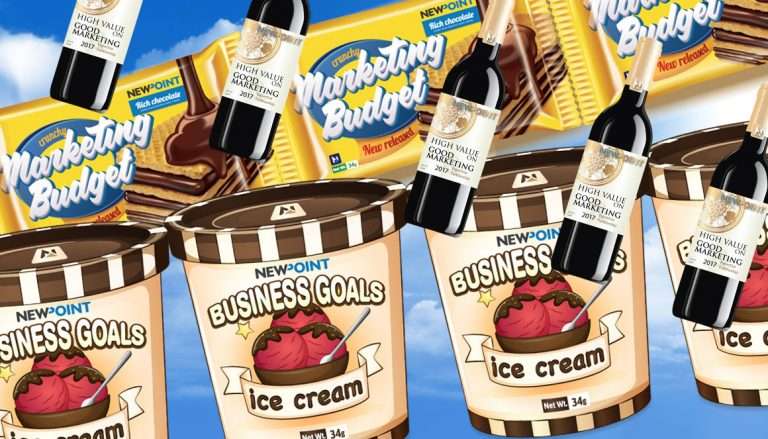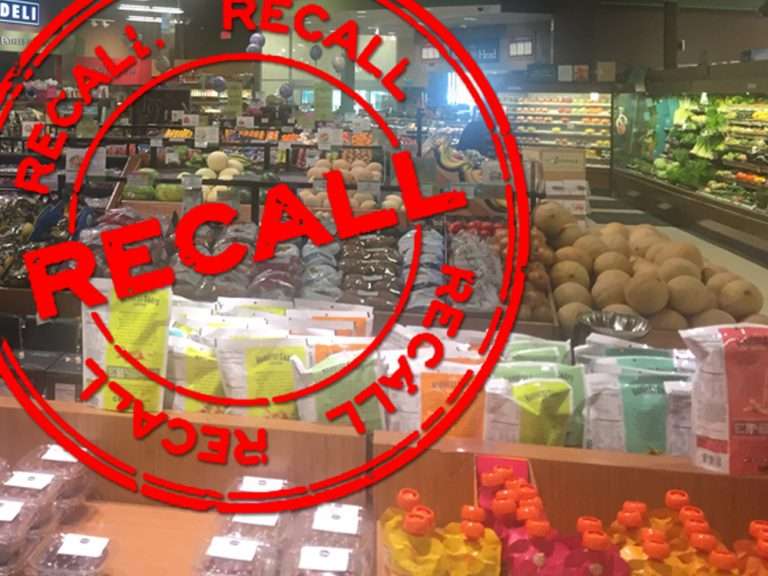Jun 21, 2023
Food Advertising to Drive Sales
 Advertising has long been an integral part of the food industry.
Advertising has long been an integral part of the food industry.
From the French avertissement for “giving notice or announcement” – advertising is not unlike the dinner bell on yesteryear’s farms. In its most basic function, food advertising is a call to eat, but it’s a dinner bell with a value proposition added to it—your value prop.
From billboards and magazine ads to social media campaigns and influencer marketing, food manufacturers have been investing in advertising for centuries (yes, centuries) to drive sales and fuel business growth.
Below we’ll examine how food advertising can drive product trials for food brands and fuel business growth.
3 Reasons Why You Need Food Advertising
Your food product’s excellent. No one’s disputing that. But don’t mistake reputation for renown.
Reputation is what you’re known for. Renown is whether people know about you. And this is where a lot of food brand managers get prickly. You tend to feel entitled to consumers’ awareness because you’ve worked hard to create an excellent, perhaps even the best, food product or service.
Why should we have to advertise? We’re number one at [fill-in-the-blank]!
In a perfect world, sure. But, we’ll be frank. At NewPoint, we’ve worked with some big national brands. Some were number one in their categories by dollar sales and consumer reviews. And even they struggled with awareness without making severe investments in advertising.
To add some perspective, the most prominent, best-known food brands – i.e., the ones who could afford to forego advertising if they wanted to and ride the wave of being a household name – refuse to do that.
Instead, they inject the most investment into food advertising. In 2021, for example, Domino’s led the way with $510 million spent on food advertising. McDonald’s, the second largest spender, spent $409 million.
Why? These highly successful brands know food advertising serves these three vital marketing to-do’s:
- To inform – make consumers aware of your food product in the first place
- To persuade – convince consumers your food product is better than others
- To remind – keep your product top-of-mind for consumers so you’re the first thing they think of when a need or craving arises
Let’s dig deeper into these three objectives to see how they drive sales and fuel growth.
1. It’s Hard to Eat the Unknown
No one’s sitting around right now wondering, Hmmmm…which new brands do I need to discover today?
While every food company would love to get discovered passively and for free, the onus is on you to make your brand known.
Gaining awareness is a common marketing objective because it’s the first and necessary step to higher levels of brand equity, like recognition, familiarity, credibility, and trust. Without awareness, there’s a 99.9% chance consumers will never buy from you.
Are you relying on word-of-mouth? We’ve heard that before. It’s code for cold feet – apprehension or doubt about investing in a particular advertising course. While word-of-mouth can significantly boost your food sales, it’s slow, hard to track, and very much out of your control (e.g., it could be harmful instead of positive).
Food advertising can help get the word-of-mouth advertising mill churning positively. And strategic messaging can put the right words into your customers’ mouths.
2. The Eyes Eat First
Our cultural lexicon is saturated with phrases that indirectly attest to the power of food advertising. Words like . . .
We eat with our eyes first.
His eyes were bigger than his stomach.
Or the more-contemporary version: Gotta feed the ‘gram first.
The understanding that food delights humans on so many levels, beyond tickling our taste buds and satisfying our appetites, is buried in all these expressions. When it comes to food advertising, this means introducing your product in all its multi-sensual glory, with juicy photography and lavish description. Don’t just give consumers something to eat; give them something to discuss.
Here’s a fun stat: even though most folks would probably freely associate “advertising” with “annoying,” “disruptive,” or “bathroom break,” when given the option for which type of advertising to view, 80% of consumers prefer to see food advertising. Lean into that.
3. Awareness > Familiarity > Trust
After informing and persuading, the third and final chief objective of advertising is to remind. The key takeaway is that repeat brand exposure leads to familiarity, and familiarity can gradually morph into trust.
Research has shown that, on average, consumers need seven exposures to a new product or service before they try it for the first time. (This is known in marketing as the “Rule of 7“.)
While advertising that results in instant conversion would be awesome (and should still be a goal), expect it to take time. Given enough exposure, A customer-centric approach featuring consistent, authentic messaging will nurture curiosity and pique trial.
Different Types of Food Advertising
While food-advertising goals may be straightforward and few, the variety of ways to go about food advertising amounts to a dizzying array of options. Let’s run through some of them.
Traditional Advertising
Traditional advertising occurs on conventional media outlets like television, radio, newspapers, and magazines. Depending on the media outlet, traditional advertising can reach massive audiences (think Super Bowl commercials).
The notion of traditional advertising is complicated and energized by new technological versions of the old outlets. For example, there are opportunities for food advertisers on streaming platforms and OTT media (new TV), Spotify or Pandora (new radio), and digital publications (new newspapers and magazines).
New Media Advertising
New media advertising refers to the “new” advertising opportunities arising from the Internet. Consumers will see this type of advertising on their internet-connected devices like computers and smartphones. Digital ads, email, social media, paid search, and text messaging are all examples of new media advertising.
The upsides of new media advertising include enhanced targeting, lower cost thresholds, interactive formats, advanced analytics, and viral potential.
Experiential Advertising
This type of advertising engages consumers in some experience.
Experiential advertising includes live cooking demos, product sampling in grocery stores or festivals, and a brand presence at a farmer’s market, concert, or another event.
Experiential advertising is excellent because, unlike, say, a print ad, creativity is less constrained. You’re putting your product where it belongs (in potential customers’ hands) and letting it do most of the persuading.
Tips for Food Brands
Let’s pretend, for the moment, that you’re convinced you need to invest more in advertising your product. Here are seven helpful tips for food brands looking to drive sales and fuel growth:
1. Know your target audience
Understanding your target audience is crucial to creating effective advertising campaigns.
2. Stand out from the competition
Find ways to differentiate your brand from competitors and create a unique brand identity. Isolate what makes your product unique and hammer those points home with well-crafted messaging.
3. Leverage social media
Social media platforms like Instagram and TikTok can be powerful tools for connecting food brands with consumers. Social media platforms are more affordable than many traditional advertising outlets, allowing budget-conscious brands to advertise against more prominent brands with deeper pockets.
4. Partner with influencers
Influencer marketing can help food brands reach a wider audience and build brand awareness.
5. Offer free samples or conduct live demos
Encourage product trials by offering free samples or discounts to consumers.
6. Use visuals to showcase products
Food is a visually appealing product, and visuals can be used to showcase products more appealingly. More melty cheese!
7. Tell a story
Use copy and visuals to tell a brand story. Levels are more likely to stick in a consumer’s mind than raw, unstructured info or selling points.
Your Food Advertising Sidekick
If you need to turn your reputation into renown with effective food advertising, schedule a chat with NewPoint today.
We’ve got deep experience in assisting food manufacturers reach both their CPG and B2B target customers.
We have a diversely talented core team, plus a long Rolodex of mercenary creatives, to develop memorable, mouthwatering, I-gotta-try-that quality advertising.
And we also have the strategic chops to advise which advertising suits your brand and customer base best, manage your media placement, and leverage that investment across an integrated marketing plan for maximum impact.
Don’t hesitate to reach out today.
Food advertising is crucial to the success of any food brand. It allows food brands to reach their target audience and showcase their products to potential customers. Advertising can also help build brand awareness, generate interest, and drive sales. In today’s highly competitive food industry, advertising has become even more important as consumers are constantly bombarded with new products and options.
One of the primary goals of food advertising is to encourage product trials. Product trial refers to trying a new product for the first time. When consumers like a consequence, they are more likely to become repeat customers. This is why many food brands offer free samples or discounts to encourage consumers to try their products.
Food advertising can also fuel business growth. Food brands can invest in product development, marketing, and other business initiatives by increasing sales and revenue. Advertising can also help food brands establish a unique brand identity.
The Role of Advertising in the Food Industry
Food advertising can take many forms, from traditional advertising like TV and print ads to newer formats like social media and influencer marketing. Each type of advertising has its strengths and weaknesses, and food brands must choose the right mix of advertising strategies to reach their target audience effectively.
TV commercials are a popular form of advertising for food brands. They allow brands to showcase their products in action and reach a broad audience. However, they can also be expensive and challenging to stand out from the competition.
Print ads, on the other hand, are a more cost-effective way to reach a targeted audience. For example, magazine ads can target specific demographics, such as health-conscious consumers or foodies. Print ads also allow for creativity, using visuals and copy to tell a brand’s story.
Social media has become a powerful tool for food brands to reach their target audience. Platforms like Instagram and TikTok allow brands to showcase their products visually appealingly and connect with consumers more personally. Influencer marketing has also become increasingly popular, with brands partnering with social media influencers to promote their products.
OTT (Over the Top) advertising is another emerging trend in the food industry. OTT refers to streaming services like Netflix and Hulu, which allow brands to advertise to consumers who have cut the cord on traditional TV. With more and more consumers turning to streaming services for entertainment, OTT advertising has become an attractive option for food brands.
Tips for Food Brands
To succeed in the competitive food industry, food brands must be strategic in advertising. Here are ten tips for food brands looking to drive sales and fuel growth:
- Know your target audience: Understanding your target audience is crucial to creating effective advertising campaigns.
- Stand out from the competition: Find ways to differentiate your brand from competitors and create a unique brand identity.
- Leverage social media: Social media platforms like Instagram and TikTok can be powerful tools for connecting food brands with consumers.
- Partner with influencers: Influencer marketing can help food brands reach a wider audience and build brand awareness.
- Offer free samples: Encourage product trials by offering free samples or discounts to consumers.
- Use visuals to showcase products: Food is visually appealing, and visuals can be used to showcase products more appealingly.
- Tell a story: Use copy and visuals to tell a brand.





